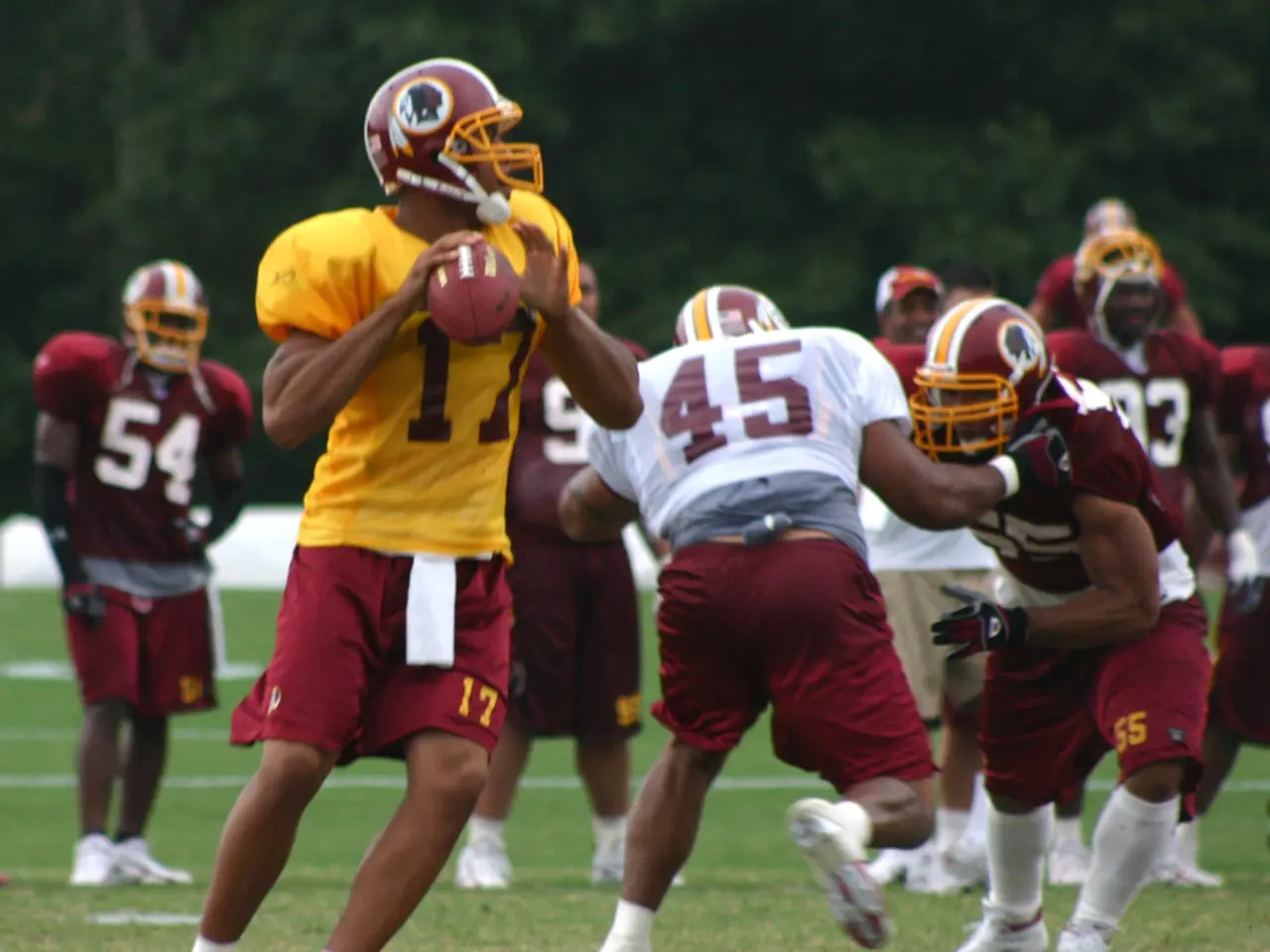Understanding the Game Mechanics of American Football
=============================================================================
American football, a thrilling sport with a rich history, is played on a field that measures 120 yards in length and 53 1/3 yards in width. The field is divided into two 10-yard deep end zones at each end, making the total field length 120 yards. The goalposts stand at each end, with a crossbar 10 feet high and uprights 18 feet 6 inches apart.
The game is played by two teams, each consisting of 11 players. The teams are divided into three main positions: offense, defense, and special teams. The offense includes the quarterback, running backs, wide receivers, tight ends, and offensive linemen. The defense includes defensive linemen, linebackers, and defensive backs. Special teams handle kickoffs, punts, and field goal attempts.
The objective of the offense is to advance the ball 10 yards in four downs, or attempts. Achieving this resets the downs to first and 10. Failing to advance 10 yards within four downs results in a turnover to the other team.
Scoring occurs in various ways. A touchdown is worth 6 points and is scored when the ball is carried into or caught in the opponent’s end zone. After a touchdown, an extra point attempt can be made by kicking the ball through the uprights (1 point) or by running/passing the ball into the end zone from the 2-yard line for two points. A field goal is worth 3 points, scored by kicking the ball through the goalposts during a play from scrimmage. A safety scores 2 points for the defense if the offense is tackled or penalized in their own end zone.
The field is covered in grass or artificial turf, and each team is allotted two challenges per game. Challenges can be made by coaches before the next play begins but cannot occur in the last two minutes of each half. If a team wins the challenge, it retains its time-out and the official’s call is overruled. If a team loses the challenge, it loses a time-out and the official’s call stands.
The game is officiated by a team of officials, responsible for enforcing the rules of the game as outlined by the NFL rules committee. The referee is the head official on the field and is responsible for giving signals and serves as the final authority on rule interpretation. The line judge keeps time during the game to backup the official clock operator and backs up the head linesman on line-of-scrimmage calls. The field judge, side judge, and back judge each have specific responsibilities related to different aspects of the game.
American football is a fast-paced and exciting sport, with a multitude of rules and regulations that shape its fundamental structure and flow. With the help of as many as 20 cameras, the action is captured and broadcast for fans to enjoy. Despite the complexity of the rules, the game remains accessible and enjoyable for millions of spectators around the world.
In the National Football League (NFL), which is a professional American football league, the objective for the offense is to advance the ball 10 yards in four downs, similar to the rules of football. The game is played on a field, divided into end zones, and the scoring methods include touchdowns, field goals, and safeties. Each team has two challenges per game to appeal questionable decisions of the officials, and the game is officiated by a team of officials, with the referee serving as the final authority on rule interpretation.








